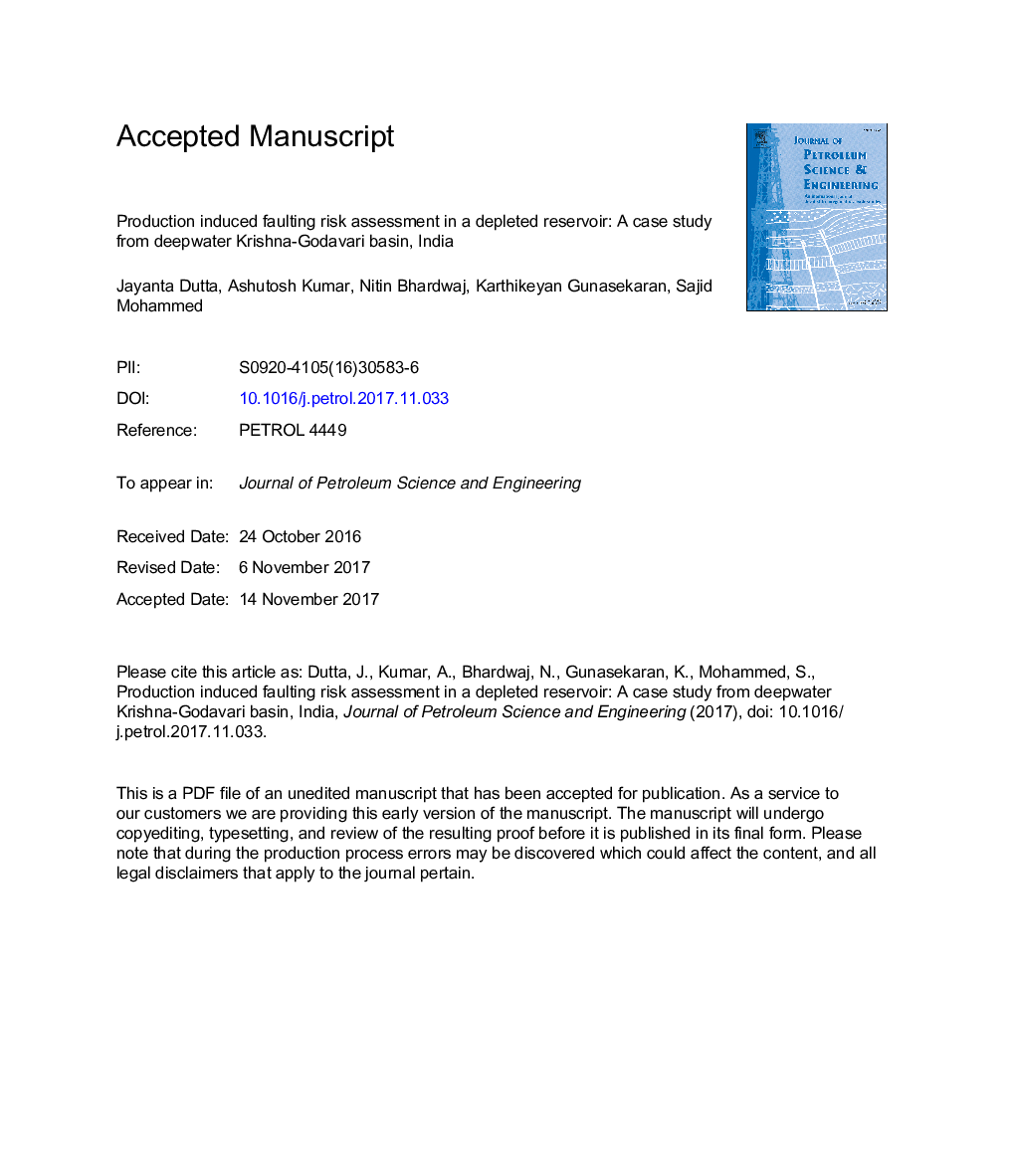| کد مقاله | کد نشریه | سال انتشار | مقاله انگلیسی | نسخه تمام متن |
|---|---|---|---|---|
| 8125453 | 1522780 | 2018 | 31 صفحه PDF | دانلود رایگان |
عنوان انگلیسی مقاله ISI
Production induced faulting risk assessment in a depleted reservoir: A case study from deepwater Krishna-Godavari basin, India
ترجمه فارسی عنوان
تولید ناشی از ارزیابی ریسک گشتاور در یک مخزن تخلیه شده: مطالعه موردی از حوضه آبخیز کریشنا-خداواری هند
دانلود مقاله + سفارش ترجمه
دانلود مقاله ISI انگلیسی
رایگان برای ایرانیان
کلمات کلیدی
مخزن تخلیه عمیق آب، ارزیابی ریسک، تولید ناشی از خطا، گراش لغزش، گرایش تمایل، دوباره فعال سازی شکستگی ثانویه،
موضوعات مرتبط
مهندسی و علوم پایه
علوم زمین و سیارات
زمین شناسی اقتصادی
چکیده انگلیسی
In a producing field, the fluid conduit nature of faults could initiate due to changes in the stress state within the reservoir. It has large impacts on different aspects (seal integrity, casing shear, mud loss during drilling, reservoir permeability, and induced earthquakes) of the field performance. In order to optimize the future drilling campaign and field management strategy, production induced faulting risk assessment was performed to evaluate the fault behavior in a depleted reservoir, where the reservoir pressure has decreased by 40% from its pre-production pressure. The risk assessment was done through (i) identifying the critically stressed fracture/fault in the pre-production stage, (ii) assesses the risk of production induced new fractures/faults generation & re-activation of existing faults, and (iii) risk ranking of faults within the reservoir. The assessment model was based on the relationship between failure mode and fluid flow with change in stresses on the fault planes due to reservoir pressure depletion. The model was built through integrating different data, such as, reservoir fault mapping, core data, drilling data, production data, and geomechanical modelling. The analysis revealed that all the faults at the pre-production stage were not critically stressed and therefore, were closed. Production induced new fractures/faults are neither generated nor existing faults re-activated till the current depleted reservoir condition in the study field. Risk ranking based on the slip and dilation tendency analysis suggests that because of the depletion fault slip tendency has not increased much and risk of fault slip is on the lower side. But, the dilation tendency has increased for all the faults which makes these faults more prone to extensional/tensile failure than shear failure. Furthermore, the analysis suggests that the severe mud loss events encountered in the post-production wells were due to re-activation of existing secondary fractures at the fault intersection depths during drilling.
ناشر
Database: Elsevier - ScienceDirect (ساینس دایرکت)
Journal: Journal of Petroleum Science and Engineering - Volume 161, February 2018, Pages 319-333
Journal: Journal of Petroleum Science and Engineering - Volume 161, February 2018, Pages 319-333
نویسندگان
Jayanta Dutta, Ashutosh Kumar, Nitin Bhardwaj, Karthikeyan Gunasekaran, Sajid Mohammed,
